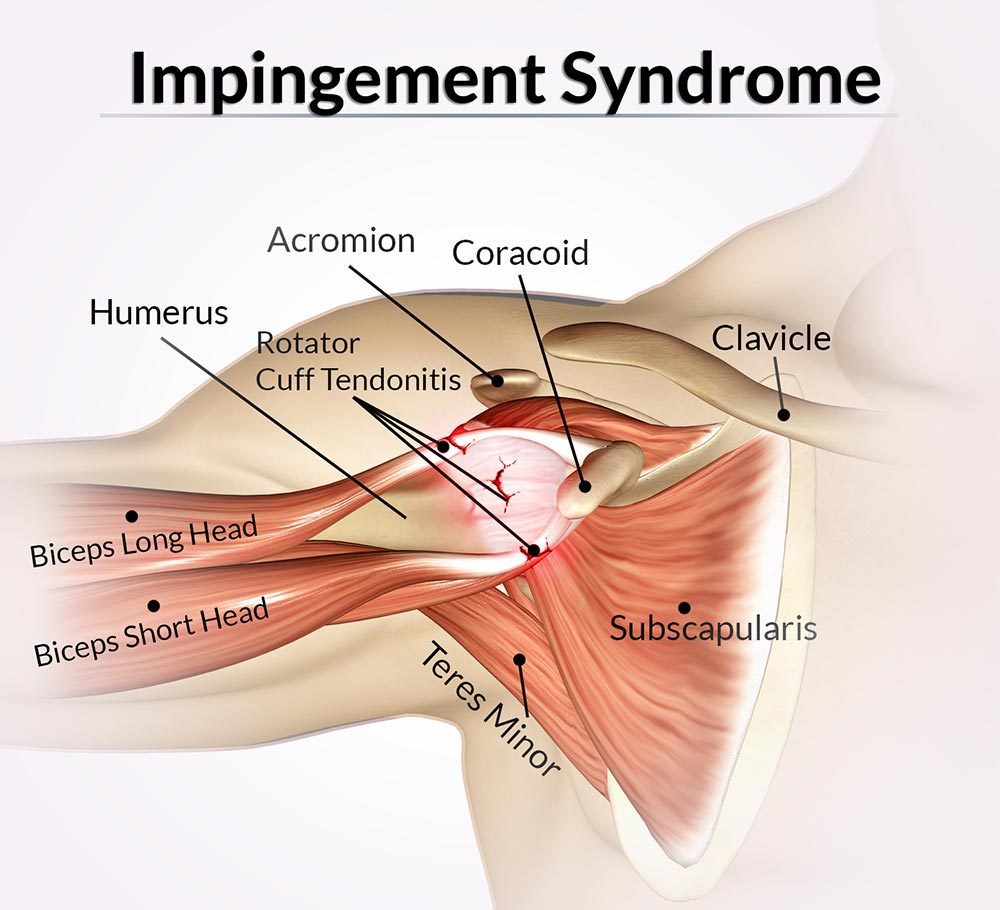What is Painful Arc Impingement Syndrome?
Supraspinatus Tendinitis or known as Painful Arc Impingement Syndrome is a common cause of shoulder pain. It is also known as impingement syndrome or Swimmer’s Shoulder since it is so common in swimmers.
What causes Painful Arc Impingement Syndrome?
Painful Arc Impingement Syndrome occurs when there is impingement of tendons or bursa in the shoulder from the bones of the shoulder. The rotator cuff is a group of muscles and tendons that attach the upper arm bone to the shoulder. They help lift and rotate the arm. The rotator cuff sits under the top of the shoulder, which is called the acromion. When having shoulder impingement, the rotator cuff catches or rubs against the acromion. When lifting the arm, the space (bursa) between the rotator cuff and acromion narrows which increases pressure. The increased pressure irritates the rotator cuff leading to impingement. Many cases of shoulder impingement are caused by overuse. Repeated use of the shoulder can make the tendons in the shoulder swell, leading them to “catch” on the upper shoulder bone. In such cases, consulting a chiropractor in Singapore may help assess the issue and guide appropriate care.
Symptoms of Painful Arc Impingement Syndrome
The typical symptoms of impingement syndrome include difficulty reaching up behind the back, pain with overhead use of the arm, and weakness of shoulder muscles. If tendons are injured for a long period of time, the tendon can actually tear in two, resulting in a rotator cuff tear. This causes significant weakness and may make it difficult for the person to elevate his or her arm. Some people can have a rupture of their biceps muscle as part of this continuing impingement process.
Painful Arc Impingement Syndrome Treatment
It is important to get proper treatment for shoulder impingement as soon as it occurs. Secondary conditions can result from the impingement of the tissues in the shoulder, including irritation of the bursa and rotator-cuff tendinitis or tears. Physical therapy can be very successful in treating painful arc shoulder impingement syndrome. When treating painful arc, your therapist will help identify painful movements and correct abnormal postures to reduce impingement compression. Manual therapy, Cryotherapy, and therapeutic modalities will be incorporated during treatment to reduce pain. Strengthening exercises and shoulder stretches will be prescribed to get the shoulder moving properly so that the tendons and bursa will avoid impingement. As symptoms improve, you will be taught how to correctly perform a range of motions using proper shoulder mechanics to allow pain-free function of the shoulder. If in doubt, please seek professional advice.
Need Help Managing Shoulder Discomfort?
If you’re experiencing pain during arm movement or suspect shoulder impingement, seeking timely care may support recovery and function. Visit our chiropractic clinic in Singapore to explore assessment and management options tailored to your condition.
Check out our popular articles: Diastasis Recti, Tight Back Muscles, Irritable Bowel Syndrome (IBS), Temporomandibular Joint (TMJ) Dysfunction, Tennis Elbow, Wrist Tendon Injury, Sciatica, Whiplash, Hernia, Herniated Disc (Slipped Disc).






